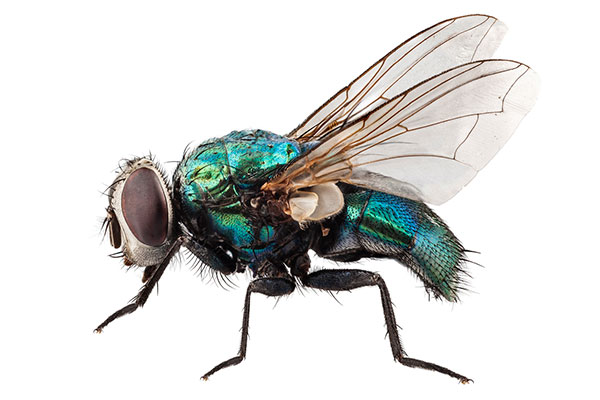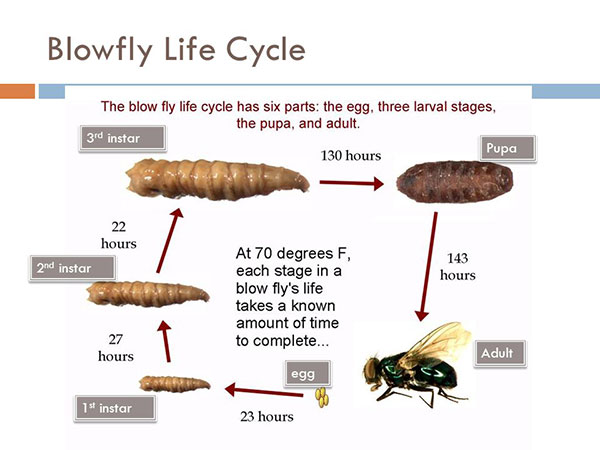When a body is discovered more than 72 hours after death, details normally examined to establish the time of death such as body temperature, skin color, and degree of muscle rigidity, have all plateaued. Blowflies, however, lay eggs within minutes of someone dying and so investigators can use the growth timeline of blowfly maggots to find out exactly when a person died.
In some deaths, establishing the time a person died is extremely important. Even the difference of a few hours can make a huge difference in convicting someone of a crime. It’s at these times a forensic entomologist (someone who studies bugs found on dead bodies) is called in to take maggot samples from the body, establish which type of blowfly it is and which stage the blowfly maggot is at in order to determine the time of death.
Life Cycle of the Blowfly
Though we use the term “blowfly” there are many different species with different growth charts and development timelines. Though adults are easy to tell apart, the maggots can look quite similar. Part of a forensic entomologist’s job is identifying which species the maggot belongs to and knowing how temperature and environment affects that growth. On average, though, the lifecycle of a blowfly goes through six stages. They are:
- Eggs Laid: Eggs are laid by a mature female blowfly in carcass holes or open wounds such as ears, nose, eyes, mouth, and anus within minutes of hours of death.
- Eggs Hatch (Larvae): Eggs are 1-2 mm in length and hatch after 24-45 hours then quickly grow to become first stage larvae, otherwise known as maggots.
- 1st Stage Maggots (Larvae): Maggots produce an enzyme that breaks down protein so they feed on semi-liquid bodily fluids as the body decomposes. At this stage they grow and after several days, shed their exoskeleton.
- 2nd Stage Maggots (Larvae): In the second maggot stage, they grow in size and continue to feed off the decomposing body. This stage ends when they molt for a second time and become third stage maggots.
- 3rd Stage Maggots (Pupae): In the third stage of maggots, now pupae, they fall to ground and no longer feed or move. Their exoskeleton hardens and turns from a light brown to a black color.
- Adult Blowfly: The adult blow fly emerges from the exoskeleton and can fly after only a few hours. A male blowfly is able to mate right away while a female must feed on protein such as a carcass or feces before being able to lay her own eggs and thus the cycle continues.
Blowflies Aid in the Decomposition Process
Blowflies often take a part in breaking down decomposing bodies and returning the nutrients back to the earth. It’s through their efforts that bodies decompose faster than they would otherwise. Because of the specific life cycle of the blowflies, the time of death can be determined with fair level of certainty. This is an important piece of information when investigating a death whether it’s an unattended death from natural causes, or when foul play is suspected.


